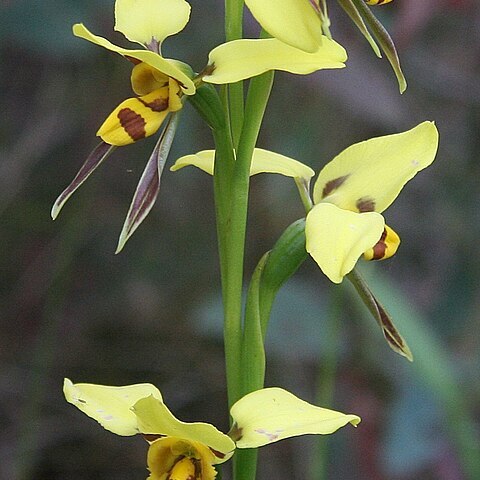Leaves 1–3, 200–500 × 3–4 mm, folded. Flower stem 200–500 mm tall, 1–7-flowered. Flowers 20–30 mm across, bright yellow with prominent dark brown markings. Dorsal sepal obliquely erect, 15–20 × 9–13 mm, with 2 large, dark brown to blackish basal blotches. Lateral sepals deflexed, 16–25 × 1–3 mm. Petals erect or recurved; stalk 5–8 mm long, dark brown; blade ovate, 12–18 × 7–11 mm. Labellum 10–15 mm long; lateral lobes asymmetrically wedge-shaped, 5–8 × 3–5 mm; midlobe 10–15 × 7–10 mm, folded. Callus ridge 1, 5–7 mm long.

